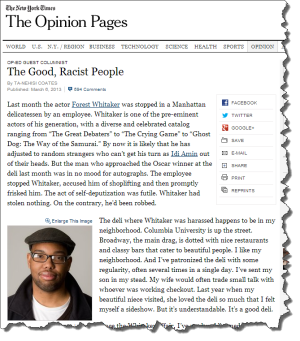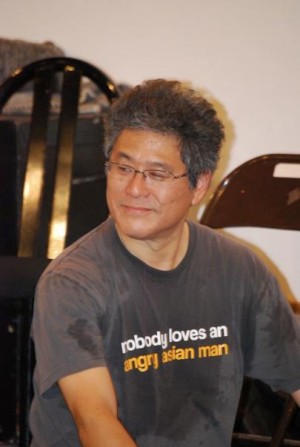On March 6, a guest op-ed column by Ta-Nehisi Coates appeared in the New York Times entitled The Good, Racist People, which addresses “the idea that racism is not merely the property of the morally deformed.”
I live in a neighborhood that gentrified crazily over the past 15-20 years, and it’s a tight-knit, nice block where people look out for each other. Part of this shows up in crime watch postings where neighbors send out emails warning other neighbors about suspicious behavior after a wave of “knock-knock” burglaries in the area.
I have objected in the past to warnings that prominently include racial characteristics of people who may be “behaving suspiciously”, especially when it seems to me that their racial characteristics are part of what makes their behavior “suspicious”. To be clear, I am not calling the people posting these warnings racist, but I know that if the race description was “Asian male”, I’d be super-pissed. I don’t want our neighborhood to be one of those where people can get stopped by the cops for being the “wrong” race.
The Good, Racist People is not about this, but it describes one of the reasons why I feel saying this out loud is necessary.
Worst case scenario: you have Trayvon Martin.
Best case scenario: you are telling people they are not welcome because of their color and you are contributing to the collective fears of our racist culture.
People argue that cops ask for this kind of information when real crimes take place, but I think it’s a slippery slope when we take it upon ourselves to use race to help bolster our case that someone is a possible criminal. I can already hear the arguments about the relevance of race, statistics, reverse racism, etc. etc. But the author’s point is one to remember: Good people can say and do racist things. Their good intentions do not erase the perhaps unintended effect.
ABOUT THE AUTHOR: Ken Narasaki is an Asian American actor and writer; his plays include NO-NO BOY, INNOCENT WHEN YOU DREAM, THE MIKADO PROJECT (with Doris Baizley), and GHOSTS AND BAGGAGE.










